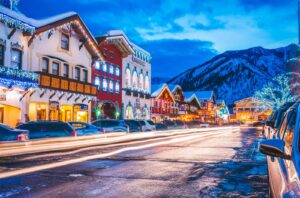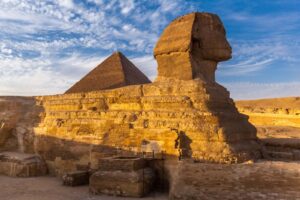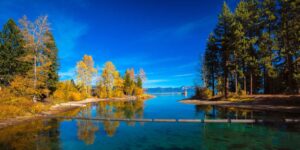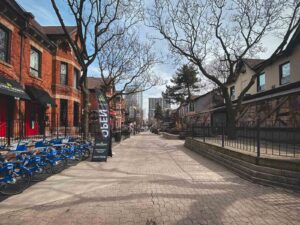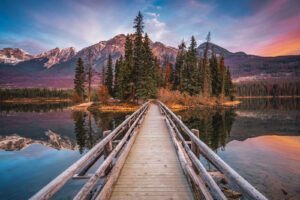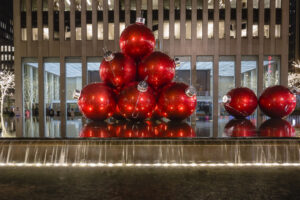Verona is captivating and it’s the history and romance of Verona, real and imagined, that make it so. Romance oozes from every polished marble street and cobblestone laneway, from the remnants of the ancient Roman city of Veronia scattered about the place to the splendour of the Renaissance palpable on every square presided over by frescoed Medieval and Renaissance palazzos.
Verona is one of Italy’s most breathtakingly beautiful cities and perhaps Italy’s most spellbinding city after Venice. Handsome buildings overlook elegant piazzas strewn with finely carved statues and ornate fountains, all watched over by majestic tombs, while the city’s skyline is graced with bridges, spires, turrets, and towers, providing brilliant vantage points from which to to take in the heart-stopping panoramas.
While there are plenty of impressive churches and museums to experience, fascinating shops to browse, and atmospheric restaurants and enotecas to enjoy, one of the greatest pleasures of visiting Verona is simply the chance to stroll. A tip: explore Verona on foot in the early morning and in the cooler evening before the tour buses arrive.
Largely pedestrianised, the historic centre or centro storico’s narrow lanes provide ample opportunities for kicking back in the old town of Verona. You can mosey across the many fine bridges spanning the Fiume Adige (River Adige), wander along the waterside promenades, and hike up to the hillside gardens overlooking Verona to soak up even more vistas.
But do know that in peak summer Verona will be crowded and prepare for that. Settle in for a few days or more, visit the main attractions as soon they open or just before closing, in between picnic in parks and gardens, linger in cafés and restaurants, take an afternoon siesta, and amble the city in the evening.
This is the first in a series of posts on Europe, starting with Italy, a country where we spent a lot of time over the years, for pleasure and work, researching, writing and photographing Italy travel guidebooks. Verona was one of our favourite cities and these are Verona’s must-visit sights.
Verona Is Italy’s Most Romantic City and These Are the Must-Visit Attractions
These are Verona’s must-visit sights and star attractions. In other posts we’ll cover where to stay, eat and drink in Verona and tips for getting off the beaten track.
Verona’s Piazzas
Like all great Italian cities, Verona boasts countless piazzas, with more than its fair share of particularly beautifully town squares. Piazza Bra is the main semi-circular ‘square’, dominated by the colossal Roman Arena and the café-lined marble promenade known as the Listone.
The chic pedestrian shopping street of Via Mazzini connects Piazza Bra to Piazza Erbe, another gorgeous square with vibrantly frescoed-buildings around its perimeter, such as elegant Palazzo Maffei, home to a magnificent ‘house museum’ with a superb art collection.
Once a vibrant marketplace proffering fresh fruit and vegetables, flowers and herbs, sadly more stalls sell souvenir t-shirts and tacky trinkets these days. Crammed with tourists and traders in summer, the piazza’s best-appreciated off-season when empty and tranquil.
Accessed via an arched passageway from Piazza Erbe, Piazza dei Signori is Verona’s most elegant square. Also known as Piazza Dante, at its centre is a 19th-century statue of Dante, who, exiled from Florence, was the guest in Verona of Cangrande I.
Dante faces the Romanesque Palazzo della Ragione, which now hosts the Achille Forti Modern Art Gallery (a must for art lovers), while the building behind Dante is the 15th-century Venetian Renaissance Loggia del Consiglio (Portico of the Counsel), and the crenellated edifice is the 13th-century Scaligeri Palazzo. Now the Palazzo del Podesta, it was home to Verona’s Scaligeri family.
Arche Scaligere – Scaligeri Tombs
On Piazza dei Signori you’ll either be repelled by the crowds of camera-snapping tourists and guides waving umbrellas in the air, barking at their tour groups, gathered on the corner nearby, or you’ll be mighty curious to see what all the fuss is about. To avoid the crowds, visit early in the morning or early evening when it’s tranquil.
It’s the extravagantly decorated and highly ornamented Gothic chapel and marble tombs of the Scaligeri dynasty in their palazzo courtyard that command so much attention, especially that of Cangrande I (‘Big Dog’) astride his horse with his cani (dogs) at his side, dating to his death in 1329. Corner Via delle Arche Scaligeri and Via della Costa.
The Scaligeri Family
When you visit Verona, you’ll see the name Scaligeri everywhere. The della Scala family, also known as Scaligeri or Scaligers, was an important family that ruled Verona in the late 13th and 14th centuries, ushering in a golden age for the city politically and culturally.
The first of the family to rule was Mastino I della Scala, who took over from the infamous tyrant Ezzelino da Romano in 1259, cementing his position in 1262. In 1277 Mastino was assassinated in Verona and was succeeded by his brother Alberto and then his son Bartolomeo.
However, it was his brother Can Francesco, nicknamed Cangrande I (‘Big Dog’), who had the biggest impact on Verona. After initially ruling with his brother Alboino, Cangrande became the sole ruler in 1311, launching a series of wars against Padua and Vicenza.
While a brave fighter, Cangrande was also a patron of the arts and a patron of poet Dante Alighieri, who wrote the masterpiece The Divine Comedy. After taking Treviso in 1329, Cangrande died in suspicious circumstances and the dynasty dwindled under his successor and nephew, Mastino II.
Apart from the Cansignorio years, 1359 until 1375, when Verona benefited from enhancements, the della Scala rule fizzled out, effectively ending in 1387 when the city was annexed by Milan.
Besides the Scaligeri tombs, evidence of the Scaligeri rule is in many of the crenellated fortifications and castles of the region, including Verona and the castle at Sirmione on Lake Garda. As you wander around the city, you’ll also notice their heraldic emblem, the scala or ladder.
Roman Veronia – Ancient Verona
Like Rome, it’s the remnants of ancient Veronia scattered about the city, appearing unexpectedly in places, that make Verona so atmospheric. The best preserved Roman sight is the Roman Arena (Verona Arena), pictured above; more on that, below.
Across the River Adige near Ponte Pietra, the Teatro Romano (Roman Theatre) is also in good condition, restored in the 18th century. It plays host to performances, including Shakespeare’s plays during a summer festival. Behind the Arena, in the small piazza, Mura di Gallieno, are substantial remains of the Gallieno walls built by Emperor Gallieno.
Not far from Piazza Bra, and serving as the entrance to Corso Porta Borsari, visitors seem to enjoy stumbling upon the white limestone Porta dei Borsari (Door of the Bursars), with its striking rows of arches and windows, which seems to take most people by surprise. Dating to the 1st century AD, it was the entrance to the Roman city; an inscription on the architrave commemorates Emperor Gallieno’s restoration of the city walls in 265 AD.
Amble under the arches along Corso Porta Borsari and you’re walking the Decumanus Maximus (main east-west road). Back beside Castelvecchio is another limestone gate dating to the 1st century AD, the Arco dei Gavi which once crossed Via Postumia. After the French destroyed it in 1805, it was rebuilt in 1932 beside the castle.
Arena di Verona – Verona Arena
This monumental Roman amphitheatre, Verona Arena, pictured above, has hosted spectacles of all sorts in its 2000 odd years, from grisly gladiatorial exhibitions to spellbinding operas to raging concerts by international rock bands.
Arguably one of the world’s best-preserved Roman amphitheatres and undisputedly the third largest after Rome’s Colosseum and Capua’s amphitheatre, the Arena held some 30,000 spectators, the size of Roman Veronia’s population at the time.
Built in 30 AD, the Arena’s original limestone façade was almost completely destroyed following two 12th century earthquakes and sections of it were carted off for other city construction projects. It wasn’t until the Renaissance that restoration began.
Since 1913 the Arena has hosted its famous summer opera season, although these days there seem to be more music festivals and rock concerts scheduled than opera.
Tips to Seeing an Opera at Verona Arena
If you’re an opera buff it’s worth paying more for the plush red seats (poltronissime) in front of the stage, or the mid-range folding seats (poltrone) in the lower rows, where the acoustics are good to excellent.
Because up high – because the opera is not amplified – you won’t hear a thing; right at the top you’ll actually have a better chance of hearing a conversation at a café on the piazza than you will the opera.
If you’re going purely for the spectacle – and that’s what you’ll get with something like Aida, which sees some 400 performers taking to the stage for the Triumphal March – then it probably won’t matter, just make sure you rent a cushion to soften the discomfort of the marble stones.
No matter where you’ll be sitting, take a light raincoat and hood (or some coins to buy one), as the chances of it raining a fairly high. If you’re going alone, take a book or be prepared to socialise, as the opera won’t start until it’s dark (or the rain has stopped).
And no, it’s not a requirement to join in on ‘the Mexican wave’. If you’re not planning on seeing a performance, then a visit during the day is a must. Piazza Bra.
Castelvecchio – Verona’s Castle
Verona’s noble rulers have made the Castelvecchio, a stunning crenellated medieval red brick fortress, their home and headquarters since Cangrande II della Scala ordered work to be started on the sturdy defensive structure in 1354.
Della Scala himself apparently conceived the designs intended to ward off both foreign as much as local invaders. Not the most popular leaders, they wanted to be prepared for popular rebellion, hence the fortified bridge, Ponte Scaligero, in the backyard to enable a swift escape. From the opposite bank there was a secure road to the Adige valley.
The Carrara dynasty moved in after the della Scala, followed by the Visconti. It then became a munitions warehouse until the 18th century, when the Venetian military academy took over.
It’s now home to the Museo di Castelvecchio (Museum of Castelvecchio), the city’s main museum, which boasts a superlative collection of paintings, sculptures, textiles, costumes, jewellery, ceramics, metalwork and weapons.
Don’t miss the equestrian statue of Cangrande I della Scala which came from the Scaliger Tombs in town, and paintings by Jacopo and Gentile Bellini, Mantegna, Pisanello, and Stefano da Verona. Italians come to admire the careful restoration by acclaimed Venetian architect Carlo Scarpa, as much as the castle and its contents.
Undertaken by Scarpa from 1959 to 1973, the architect’s style is stamped all over the place (for those familiar with his work), from the attention to detail in the furnishings to the fixtures designed especially to display the pieces. Corso Castelvecchio 2.
Duomo di Verona – Verona Cathedral
The most sumptuous of Verona’s many splendid churches, construction of the Duomo di Verona or Verona Cathedral began in 1139, but while the cathedral was consecrated in 1187, it took more than four more centuries before work was properly completed.
Mostly Romanesque (note the intricately detailed carvings on the gigantic doors), it’s actually a mishmash of styles, with the Gothic and Renaissance features that became fashionable during the building of the Duomo being incorporated into the design.
While boasting evidence of exquisite craftsmanship in every respect (note the two-storey portal by celebrated Medieval sculptor Nicolo, and the beautiful choir screen by Veronese Michele Sanmicheli) and a wealth of art (such as Titian’s vivid Assumption), it’s really the rich marble-work that steals the show, from the polished marble patterned floors to the baptismal font ornately carved from an enormous single block.
Don’t expect to find this magnificent cathedral on the main square, Piazza Bra – unlike most Italian cities, Verona’s Duomo is on Piazza Duomo, a small square near the river, however, in the great Italian tradition of church-building, it was constructed atop an Early Christian church and a Roman temple.
Romeo and Juliet
Most visitors to Verona seem intent on doing an itinerary that takes in a combination of places that are thought to provide settings for the 1597 William Shakespeare comic-tragedy play Romeo and Juliet and others where they believe the ‘real’ lovers had been. A balcony at ‘Villa Capuleti’ is one of Verona’s most popular attractions.
Yet what they’re doing is some sort of magical mystery tour because the actual existence of a real life Romeo and Juliet is highly doubtful. It’s widely felt that Shakespeare’s inspiration for the play was The Tragicall Historye of Romeus and Juliet, a poem written by an Englishman, Arthur Brooke in 1562.
However Brooke’s inspiration was a French translation of a tale by an Italian writer, Matteo Bandello. However, Bandello wasn’t the original source for the story either, which goes back even further. The earliest version of the story has been traced back to Mariotto and Gianozza, a short story by Masuccio Salernitano published in 1476.
While this took inspiration from an earlier fictional story based around a tragic romance, this was the first time it was set in Italy, yet it contains many of the elements that went into Shakespeare’s version, including the secret marriage.
Luigi da Porto adapted the story, giving the characters the name Giulietta e Romeo and fleshing out more details including the names of the feuding families, Montecchi and Capuleti (Montague and Capulet) and the location of Verona.
Tips to Visiting Verona
Avoid visiting Verona in the height of summer if you can help it, when the city is uncomfortably crowded with tourists and there’s no use escaping to the lake, because Lake Garda is just as jam-packed.
Few travellers to Verona seem to realise that Verona is the Veneto region’s most visited city after Venice, and in fact, it’s been a popular destination since Julius Caesar used to holiday here and it was written up by great literary travellers such as Goethe and Stendhal.
Verona’s modern day popularity is mostly due to the city being the setting for William Shakespeare’s play Romeo and Juliet, and for most tourists is the motivation for visiting, rather than the splendidly preserved medieval and Renaissance architecture and atmospheric piazzas.
Let those be your reason for visiting Verona, but do try to visit in late summer, spring, autumn or fall or even off-season in winter – we’ve spent time in Verona in winter and it’s wonderful. Also see our Verona walking itinerary for romantics.

Related Posts You Might Like


